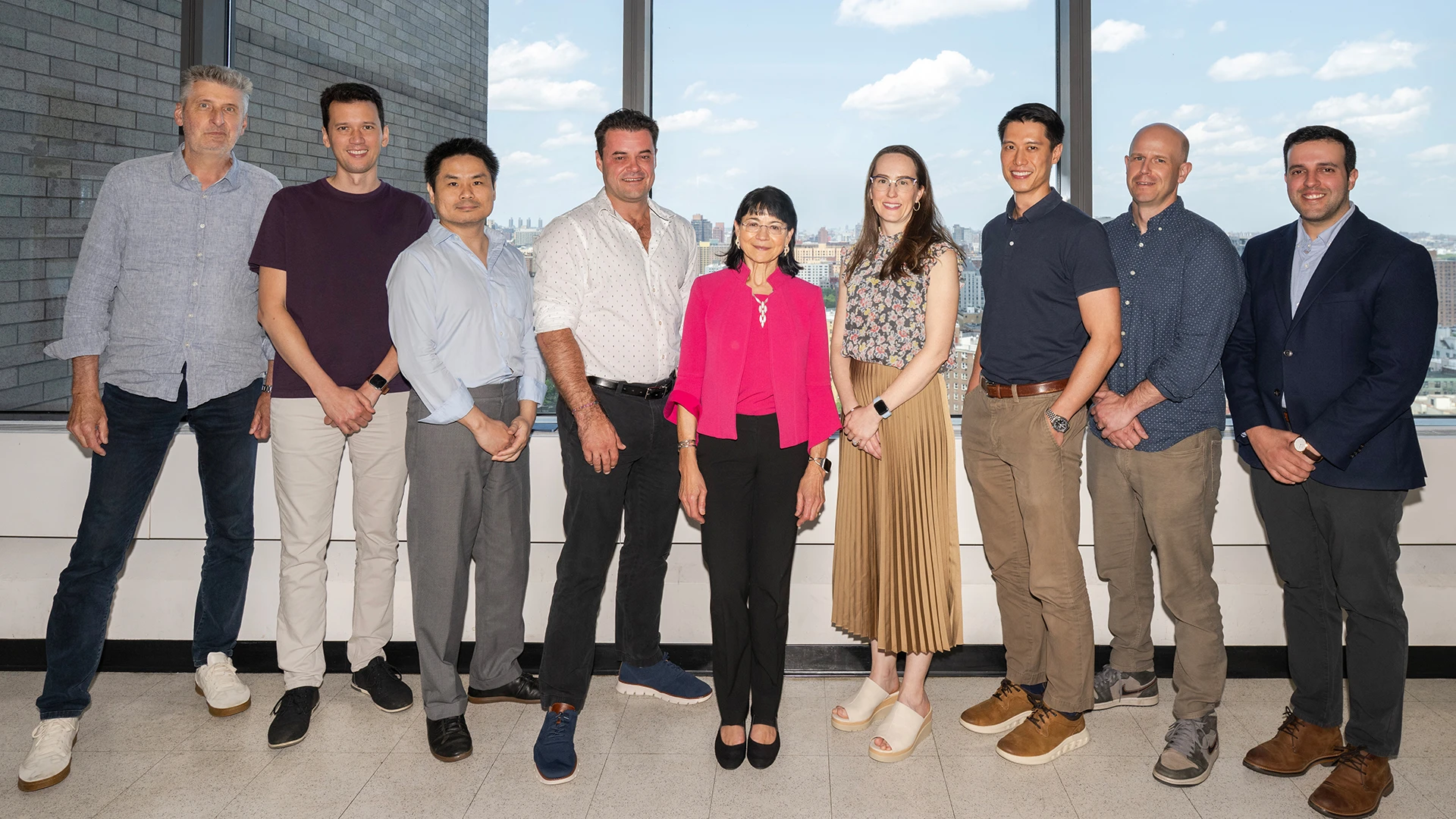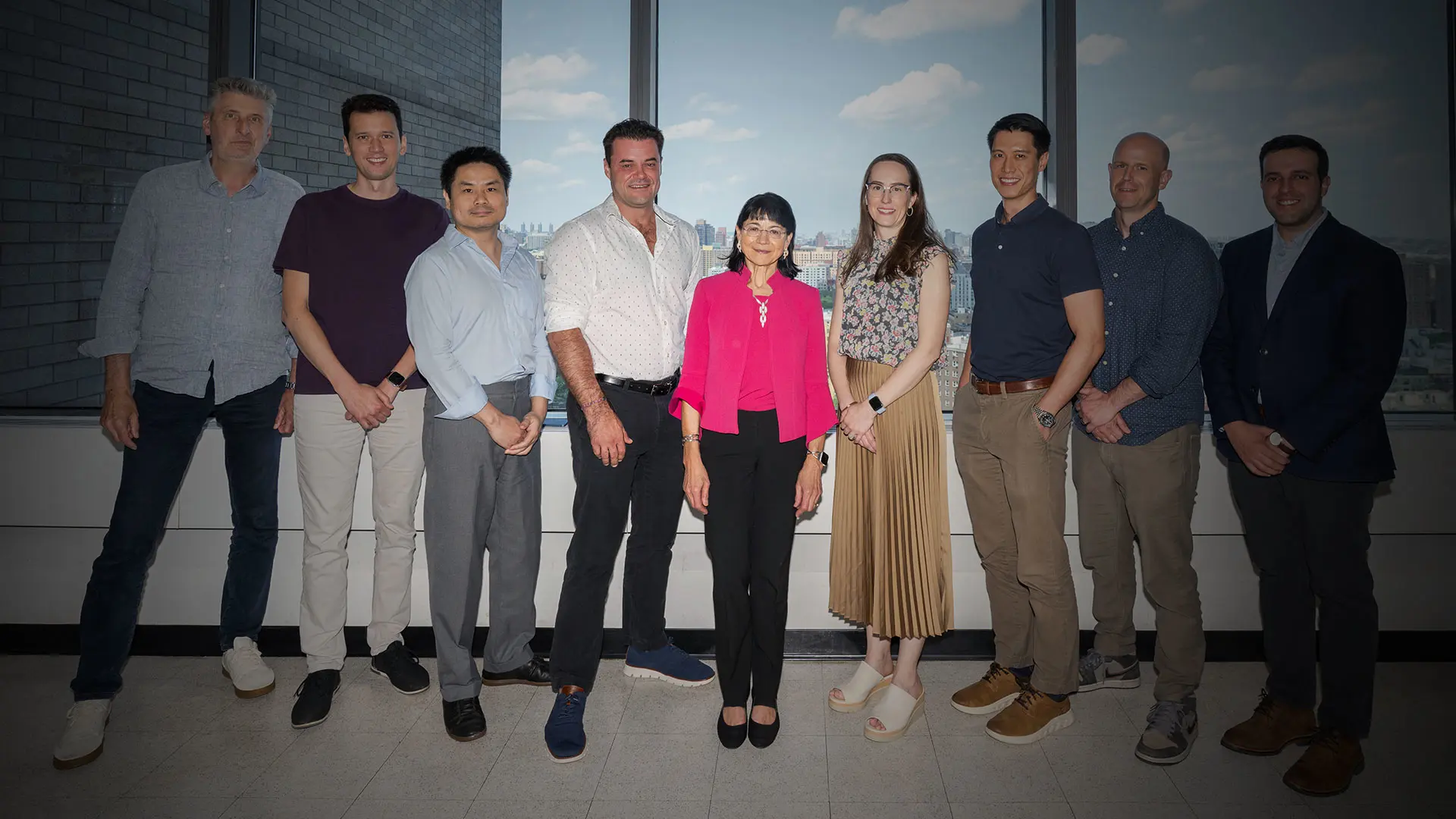Leading this effort is Sarah E. Millar, PhD, Dean for Academic and Scientific Affairs, Director of the Black Family Stem Cell Institute, Lillian and Henry M. Stratton Professor of Gene and Cell Medicine at the Icahn School of Medicine, and Chair of the newly established Department of Stem Cell Biology and Regenerative Medicine. This new department consolidates the Department of Cell, Developmental and Regenerative Biology and the Institute for Regenerative Medicine.
Over the past six years, Dr. Millar has recruited 13 exceptional investigator-track scientists from institutions across the United States and internationally, expanding research capabilities in hematopoietic stem cells and epithelial biology, and acquiring new strengths in studying upper airway and lung stem cells, liver regeneration, neurodevelopmental disorders, and human stem cell derived models of neurodegenerative diseases.
Dr. Millar’s own laboratory has made seminal discoveries on the roles of cell-cell signaling pathways and epigenetic regulatory mechanisms in the development, regeneration, and stem cells of the skin and other epithelial tissues—knowledge that is foundational to developing new therapies to accelerate wound healing and treat hair loss diseases and genetic skin disorders.
Recent publications from the Millar Lab include the identification of stem cells and mechanisms of aging of the Meibomian gland, a specialized gland in the eyelid that functions to prevent evaporation of tear fluid. Shrinkage of the Meibomian gland, due in part to stem cell exhaustion, underlies aging associated evaporative dry eye disease, which causes discomfort and vision problems and lacks effective treatment. Dr. Millar’s findings point to potential new therapeutic approaches to this very common condition.
13 new faculty expand capabilities in stem cell biology and regenerative medicine.
Expansion of these programs has created a vibrant and collaborative environment involving scientists working in diverse areas of stem cell biology and regenerative medicine across basic science, translational research, and clinical entities throughout the Mount Sinai Health System. It simultaneously offers unparalleled opportunities for master’s and PhD students and postdoctoral fellows at the Graduate School of Biomedical Sciences who figure prominently in the growth equation. “We are educating the next generation of scientists,” Dr. Millar says, “to achieve our overriding goal of accelerating research in regenerative medicine so it can truly benefit patients.”

Sarah E. Millar, PhD, center, with recruited investigator-track scientists who are among those helping to expand Mount Sinai's research capabilities in diverse areas of stem cell biology and regenerative medicine.
Read on to learn more about the broad mix of scientific skills, talents, and interests of the newest faculty.
Joel Blanchard, PhD, Associate Professor of Neuroscience, and Stem Cell Biology and Regenerative Medicine
Having trained in stem cell biology and neuroscience at Harvard University and the Scripps Research Institute, Dr. Blanchard leads a large research group that engineers 3D models of human brain tissue from stem cells and applies them to understanding and targeting risk factors for Alzheimer’s disease, Parkinson’s disease, and other neurodegenerative conditions. Dr. Blanchard’s recent exciting breakthroughs include new live-imaging approaches to understanding the mechanisms of Parkinson’s disease; uncovering defects in lysosomal proteolysis that contribute to Parkinson’s disease; and discoveries on the roles of cholesterol in Alzheimer’s disease that open up new therapeutic opportunities.
Allison M. Bond, PhD, Assistant Professor of Neuroscience, and Stem Cell Biology and Regenerative Medicine
Her team is investigating how neural stem cell properties change across development, and how this evolution impacts their function throughout their lifespan, using clonal lineage tracing, single-cell omics technology, flow cytometry, and advanced imaging techniques. Dr. Bond’s work aims to reveal new approaches to combat memory loss and neurodegeneration in aging. Her recent advances include using single-cell analyses to reveal a multistep process with defined milestones underlying establishment of the adult neural stem cell pool in the mammalian brain.
Ya-Wen Chen, PhD, Associate Professor of Otolaryngology; Stem Cell Biology and Regenerative Medicine; and Pathology, Molecular and Cell-based Medicine
Dr. Chen has developed innovative human pluripotent stem cell (hPSC)-derived lung organoid models. She is using these to understand mechanisms of lung infection, study the dynamics of lung injury repair, and develop stem-cell based therapies. One of her goals is to reconstruct a functional trachea and lung outside or inside the body to replace organs that are damaged. Dr. Chen is working closely with surgeons in the Department of Otolaryngology to bring new stem cell-based therapies to patients.
Andrew Ji, MD, Assistant Professor of Dermatology; Oncological Sciences; and Stem Cell Biology and Regenerative Medicine
Dr. Ji is a practicing dermatologist and physician-scientist. His team uses single-cell and spatial transcriptomics analyses of normal and diseased human skin to understand how diverse cell types—including epithelial, stromal, and immune cells—work together to maintain healthy tissue, and how those interactions can be restored in disease settings, such as skin inflammatory conditions and cancers.
Jaymin Kathiriya, PhD, Assistant Professor of Medicine (Pulmonary, Critical Care and Sleep Medicine), and Stem Cell Biology and Regenerative Medicine
Dr. Kathiriya’s team uses in vitro, in vivo, and in silico computational tools and techniques to study early mechanisms of stem cell activation and the role of cytoskeletal remodeling in abnormal stem cell differentiation in lung diseases, with the aim of identifying new therapeutic targets.
Alison May, PhD, Assistant Professor of Stem Cell Biology and Regenerative Medicine, and Otolaryngology
Her lab focuses on development, regeneration, and diseases of exocrine glands, including salivary glands, and glands in the upper airway. They are using developmental biology and single-cell multi-omics to define cell identities, stem cell behaviors, lineage relationships, and cell-cell interactions required for healthy gland establishment and maintenance. Delineating the gene regulatory networks that drive these processes will provide essential information for understanding gland remodeling processes in disease states.
Georgia Panagiotakos, PhD, Associate Professor of Psychiatry, Neuroscience, and Stem Cell Biology and Regenerative Medicine
Dr. Panagiotakos is building a rigorous mechanistic understanding of mammalian brain development with a goal to reveal the underpinnings of neuropsychiatric disorders of developmental origin. Her research group studies how electrical activity and calcium signaling regulate the generation of distinct cell types during normal brain development, and how these go awry in conditions such as autism. They are also investigating how activity-regulated developmental mechanisms may be reactivated in adult neurological disorders and in brain tumors.
Prashanth Rangan, PhD, Associate Professor of Stem Cell Biology and Regenerative Medicine
The Rangan Lab is using studies of germline stem cells to understand the mechanisms that reset cellular age. Germ cells ensure that appropriate and undamaged cellular components are passed on from generation to generation. In multicellular organisms, somatic cells age by accumulating damage and eventually meet death. By contrast, germ cells, which give rise to gametes, escape aging. Understanding how germ cells defy aging could inform new approaches to age-related disorders in humans. Recent discoveries in the Rangan Lab include the finding that ribosome biogenesis and ribosome levels can control germ stem cell differentiation via selective translation of CAG repeat-containing transcripts. The Rangan Lab has also uncovered regulation of nuclear pore complexes by heterochromatin, and the critical roles of nuclear pore complexes in oocyte development.
Christopher Sturgeon, PhD, Associate Professor of Stem Cell Biology and Regenerative Medicine, and Associate Director of the Center for Advancement of Blood Cancer Therapies
Dr. Sturgeon’s research is focused on understanding hematopoietic development, using both human pluripotent stem cells and model organisms, with a goal of developing novel cell-based therapeutics. Current projects in the Sturgeon Lab include delineating the mechanisms that control development of hematopoietic stem cells, natural killer cells, B cells, and macrophages, and harnessing this information to derive specific cell types for potential therapeutic applications in cancers and other diseases. Recent discoveries include their use of human pluripotent stem cells to identify a retinoic acid-dependent hemogenic endothelial progenitor population, and the finding that haematopoietic stem and progenitor cell heterogeneity is inherited from the embryonic endothelium.
Tianliang Sun, PhD, Assistant Professor of Medicine (Liver Diseases), and Stem Cell Biology and Regenerative Medicine
Dr. Sun’s lab is elucidating how the liver responds to various types of injuries, and unraveling the intricate mechanisms governing liver regeneration at both spatial and single-cell levels. By delving into the molecular intricacies of liver regeneration using mouse models, they aim to uncover novel targets that hold potential for regenerative therapeutics.
Matheus Victor, PhD, Assistant Professor of Neuroscience, and Stem Cell Biology and Regenerative Medicine
The Victor Lab is using 3D stem cell technologies, including brain organoids, CRISPR-based tools, post-mortem human brain samples, and mouse models, to elucidate molecular mechanisms that are critical for the assembly and function of neural networks. This information will reveal fundamental principles governing the organization and function of the adult brain, and how these are perturbed in disease. They are particularly interested in dissecting the cause-effect relationship between neuronal network disturbances and perturbations in glial cell function in Alzheimer’s disease, with the ultimate goal of identifying new approaches to early diagnosis and treatment.
Elvin Wagenblast, PhD, Assistant Professor of Oncological Sciences, and Pediatrics (Pediatric Hematology-Oncology)
The central question of the Wagenblast Lab is to understand how a normal blood stem cell can become cancerous. In leukemia, the initiating genetic mutations occur as early as during fetal development. Dr. Wagenblast’s team applies cutting-edge CRISPR/Cas9 genome editing approaches in human primary blood stem cells to model the pre-leukemic and leukemic phases of acute myeloid and acute lymphoblastic leukemia in vivo. The goals are to uncover insights into the genetic, cellular, and developmental mechanisms of leukemia, with a particular focus on childhood leukemia, and to identify therapeutic vulnerabilities of the disease. Recent exciting discoveries include the finding that the developmental stage at which hematopoietic stem cells acquire oncogenic mutations profoundly affects the outcomes and therapeutic responses of the resulting leukemias.
Zhe Ying, PhD, Assistant Professor of Stem Cell Biology and Regenerative Medicine
The Ying Lab studies the causal relationships among cancer lesions, tissue-damaging stresses, environmental signals, and epithelial cell fate choices. A major focus of the lab is on triple negative breast cancer (TNBC), the most aggressive subtype of breast cancer. Dr. Ying has leveraged an in utero lentivirus injection-based genetic screen system to identify major cancer driver mutations from hundreds of gain- and loss-of-function lesions enriched in TNBC patients. The lab’s ongoing research investigates how these driver lesions hijack normal mammary developmental programs to fuel TNBC-specific cell fate commitment. A second major focus is on targeted regeneration post-radiation therapy. Cancer therapies such as irradiation damage normal tissue, while therapeutic activation of major protective and regenerative pathways often increases the risk of cancer recurrence. Using oral cancer and the adjacent radiosensitive salivary glands as models, the Ying Lab has identified molecular approaches to selectively replenish damaged salivary glands without stimulating cancer recurrence. They now aim to establish a framework for understanding the distinct growth control mechanisms in normal versus cancerous epithelium post irradiation.
